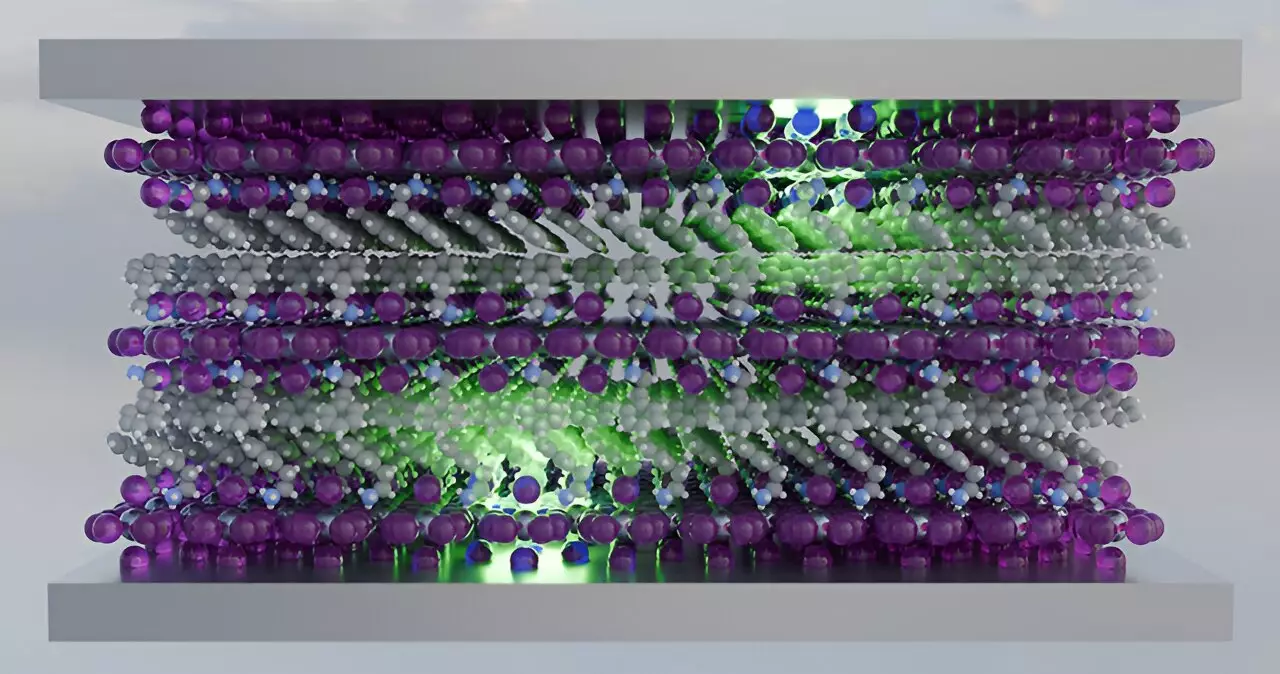In the world of solar cells and light-emitting diodes (LEDs), one of the major challenges is exciton-exciton annihilation, a process that leads to the lowering of solar efficiency and light output in LEDs. This mechanism occurs when two excitons interact, resulting in the loss of energy and a decrease in the desired outcome. To combat this issue, researchers are constantly exploring new ways to control exciton-exciton annihilation and improve the overall efficiency of these devices.
Researchers at the National Renewable Energy Laboratory (NREL) and the University of Colorado Boulder have been investigating the use of cavity polaritons to control exciton-exciton annihilation. Cavity polaritons, which are essentially photons trapped between two mirrors, have the potential to combat energy dissipation and increase efficiency in optoelectronic devices. By coupling excitons with cavity polaritons, researchers can manipulate the loss mechanism and potentially enhance the performance of solar cells and LEDs.
Using transient absorption spectroscopy, the researchers were able to demonstrate how varying the separation between the mirrors enclosing a 2D perovskite material called PEA)2PbI4 (PEPI) layer can influence exciton-exciton annihilation. The ultrastrong coupling of the PEPI layer in a Fabry-Pérot microcavity resulted in a longer lifetime for the excited state and a significant decrease in the loss process. This control over exciton-exciton annihilation could lead to increased efficiency in solar cells and LEDs by minimizing energy losses.
The ability to manipulate exciton-exciton annihilation in the active materials of solar cells and LEDs could have a profound impact on energy efficiency. By reducing energy losses through innovative control mechanisms, researchers aim to enhance the performance of these devices and maximize their effectiveness. This study highlights the potential of using cavity polaritons to improve the dynamics of exciton systems and optimize energy transfer processes.
As the research on exciton-exciton annihilation continues to evolve, there is great potential for new advancements in the field of optoelectronics. By leveraging the quantum nature of hybrid states like polaritons, researchers can explore innovative approaches to enhancing the efficiency of solar cells and LEDs. The ability to tune the coupling strength and control the energy loss in these systems opens up new possibilities for achieving higher levels of performance and sustainability.
The investigation into exciton-exciton annihilation and its control through cavity polaritons represents a significant step forward in the development of more efficient solar cells and LEDs. By understanding and manipulating the loss mechanisms in these devices, researchers are unlocking new opportunities for improving energy efficiency and maximizing the impact of renewable technologies. The future looks bright for optoelectronics as advancements in exciton dynamics continue to shape the landscape of sustainable energy solutions.


Leave a Reply